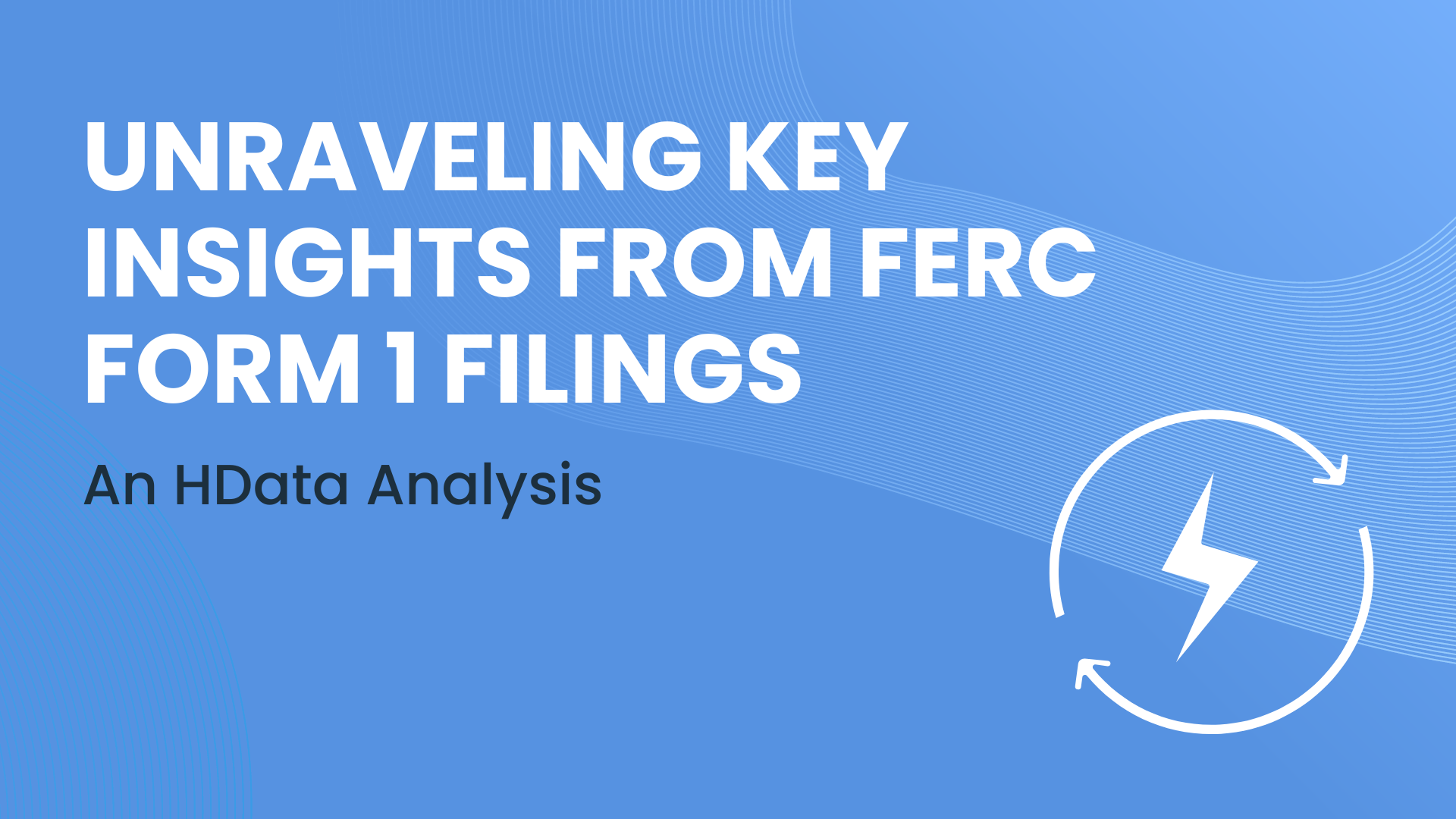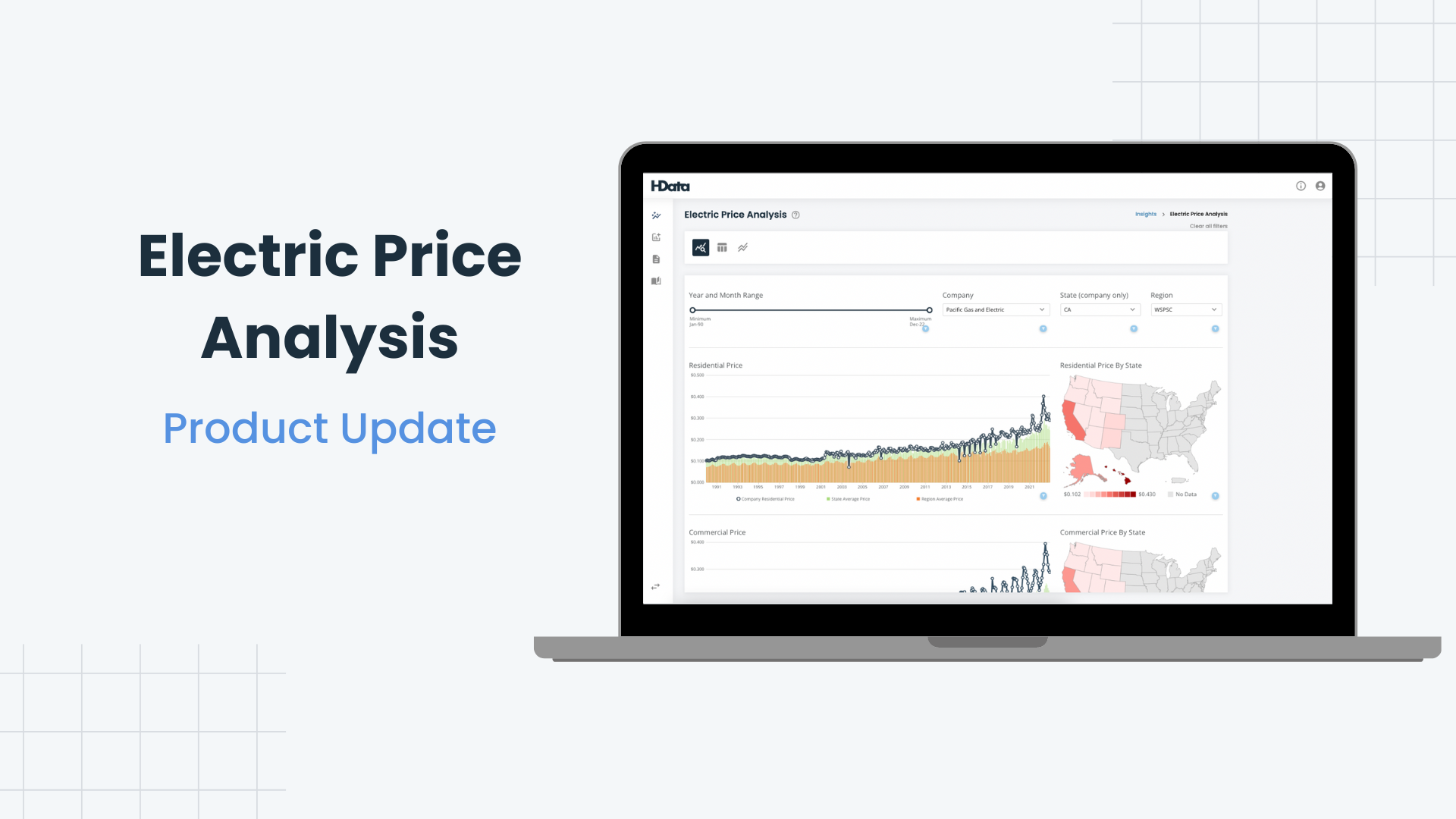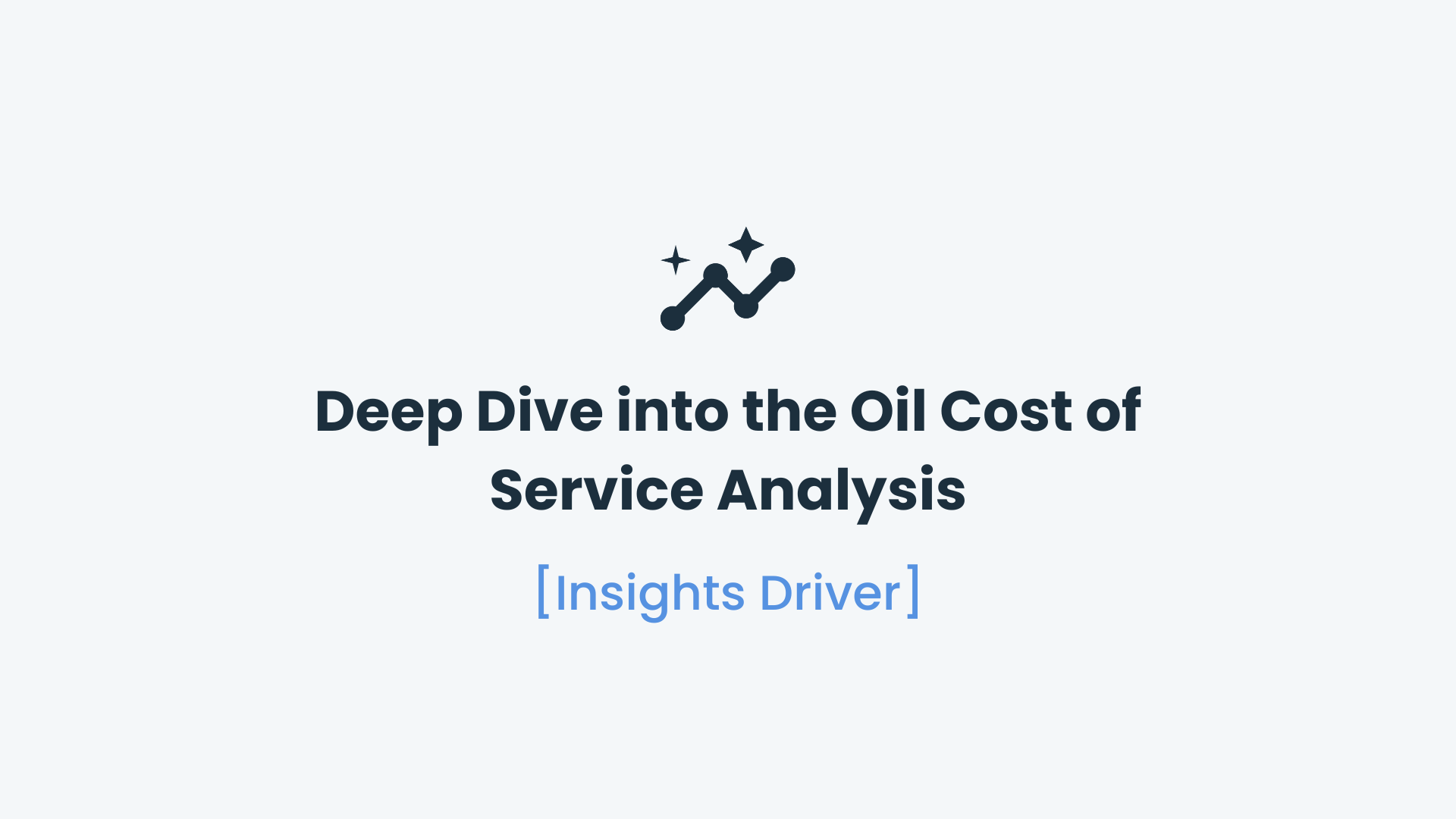Data is the Lifeblood of Your Utility
Data is the lifeblood of any company, assisting all decision makers–from CEOs and CFOs setting long-term strategy all the way to entry-level business analysts deciding which new software to implement for their team. But data-driven decision-making only becomes more difficult as the amount of data one has at their fingertips grows at an exponential rate.
Just in 2022 alone, the total data created and captured is expected to be 97 zettabytes, according to Statista; that’s 97 trillion gigabytes! How do you know if the data point you’re looking at is the right one amidst this slew of information?
In this case, having Key Performance Indicators, or KPIs, based on trusted and verified metrics, becomes useful. While it may seem like the annoying buzzword of the office, KPIs serve a critical role in determining the efficiency of a company’s operation.
For electric utilities seeking to benchmark themselves against peers and competitors, it is now possible to automatically derive KPIs from the most-verified data source of all: your and your peers’ government filings.
What is a Key Performance Indicator (KPI)?
Key Performance Indicators are metrics that show success or failure toward a goal or result. These metrics are thoughtful to the question they seek to answer and directly measure the result of activities to create tangible signals to change behavior if the goal isn’t achieved, or reward behavior when the goal is achieved.
KPIs need to be tailored to the area they aim to measure and can’t be so broad as to provide no tangible insights. For example, suppose your electric company uses a metric of Operation and Maintenance (O&M) Expense. The number by itself can be insightful, but what if O&M Expense increased 30% from Q1 to Q2?
Just O&M by itself is too broad to show meaningful insight. Did your company do major repair work on a nuclear plant, open a new hydroelectric dam, or see fuel costs spike?
Want a better metric? Look at at O&M per Dollar of Revenue, drawing the numbers directly from regulatory filings. If O&M did increase but revenue increased with it, the metric should stay stable, which indicates, perhaps, a new plant opening that generates cost and revenue.
Better yet, if tracking metrics for coal or gas generation, exempt fuel costs. Non-Fuel O&M per Dollar of Revenue avoids any distortions caused by fluctuations in demand and supply for fuels.
If the metric increases significantly from 30 cents per dollar to 50 cents, that probably means there were unexpected costs somewhere. We can take this even further if we slice O&M by their generation type. Did Steam O&M decrease while Nuclear increased?
These are the questions you ask when deciding on insightful key performance indicators for your electric utility.
Top Key Performance Indicators for Electric Utilities
1. Rate Base
Rate Base is a bit of a tricky metric but imperative for understanding how state and federal governments regulate public utilities. Rate Base is the value of property financed with company equity in which public utilities are allowed an opportunity to earn a specified rate of return (essentially dictating how much profit a utility can earn).
This rate of return is negotiated with the regulator and other stakeholders, meaning an undervalued Rate Base translates to a lower return on equity for the business. It becomes even more complicated for companies that transmit electricity across state lines, making them regulated not just by state commissions but also the Federal Energy Regulatory Commission.
2. Non-Fuel Operation and Maintenance Costs
Operation and Maintenance costs are the money utilities use to run their energy systems, be it the repair work on a boiler plant, the rents on the land, or even the cost of reading meters at the homes of customers. The notable metric missing from this cost is fuel, why is that?
Fuel is excluded from this KPI because its cost can fluctuate significantly from year-to-year or even month-to-month, creating a lot of noise in the data that makes it unreliable for decision making.
If you include fuel in your KPI, and you see a jump of $100 million in O&M, how can you tell if that jump is from the fuel cost or an actual operational problem like the repair of a hydroelectric dam?
There are several ways to analyze non-fuel O&M on an apples-to-apples basis across utilities.
3. Non-fuel O&M per Megawatt Hour Sold (MWh)
Non-fuel O&M per Megawatt Hour Sold (MWh) looks at how much a utility spends to operate and maintain the plants that create, transmit, and/or distribute power, and how much is spent for each unit of electricity that ends up being sold and used by a customer.
4. Non-fuel O&M per Megawatt Hour Generated
Non-fuel O&M per Megawatt Hour Generated looks at the cost of operating and maintaining the power plants for each megawatt hour (MWh) of energy generated at these plants. It asks and answers the question “how cost-effective are we in generating electricity?”
Similarly, you can look at the generation types and see if steam generation is more efficient cost-wise than nuclear or hydroelectric.
5. Non-fuel O&M per $ of Revenue
You can look at efficiency from a top-line perspective. If you see O&M per Dollar of Revenue rise above $1, you can know that you’re losing money instead of making money! You want to see this number stay below $1.
6. Non-fuel O&M per Customer
It is important to understand certain costs on a per-customer basis. Given that costs are determinant of a customer’s electric bill, ensuring costs are within reasonable thresholds is key to mitigating costs and becomes an important signal for changing operational and investment behavior.
7. Total non-fuel O&M
The most raw of these numbers is total non-fuel O&M cost. The insight of this number comes from looking at it over time, usually from year to year, also called Year-on-Year (YoY) Variance.
If you see a drastic change from 2021 to 2022, that is a red flag to dive into O&M and diagnose the reason costs varied. The same can be analyzed from quarter-to-quarter in the same year or quarter-on-quarter from past years for a more granular look.
8. Administrative and General expenses
Also called A&G for short, these costs are the things that don’t go into plant operation and maintenance. Instead, they represent everything else.
This means salaries, employee benefits, paper for the printers, and even the birthday cake in the staff kitchen. These are analyzed in a similar way to non-fuel O&M with many of the same metrics switched from O&M to A&G. For example:
- A&G per $ of Revenue
- A&G per Customer
- A&G per MWh Sold
9.Transmission Line Maintenance per mile
Similar to O&M, we can look at expenses for specific subsets of an electric utility's operations. Transmission lines are the veins of any electrical grid and maintaining them is a high priority.
Ensuring these lines are maintained but the cost is within the correct margin is indicative of overall financial performance. We can understand cost per unit for transmission lines by looking at the total cost it takes to maintain the system per mile of line.
Tracking Key Performance Indicators
It’s imperative to know that the data you receive to calculate key performance indicators is accurate, timely, and most of all, insightful. The problem is there are numerous data sources you can use. Which one do you choose?
Many data sources give you topline information that is easy to find and visualize, but don’t allow you to dive deeper into the data and tie it back to notable plant events in your company. Others provide all the data you could desire but without much training or help, requiring you to hire specialized data engineers to grab and clean the data before you can even analyze it.
The HData Hub automatically pulls data points directly from your and peers’ regulatory filings, allows for drillback all the way to the exact location where each number appears in each schedule of each form, and is simple and user-friendly enough to be useful from the first minute.
We at HData believe this shouldn’t be a decision of one or the other. Why can’t you have both?
Ready to learn more?
Schedule a quick call to learn how KPIs can empower your business.


